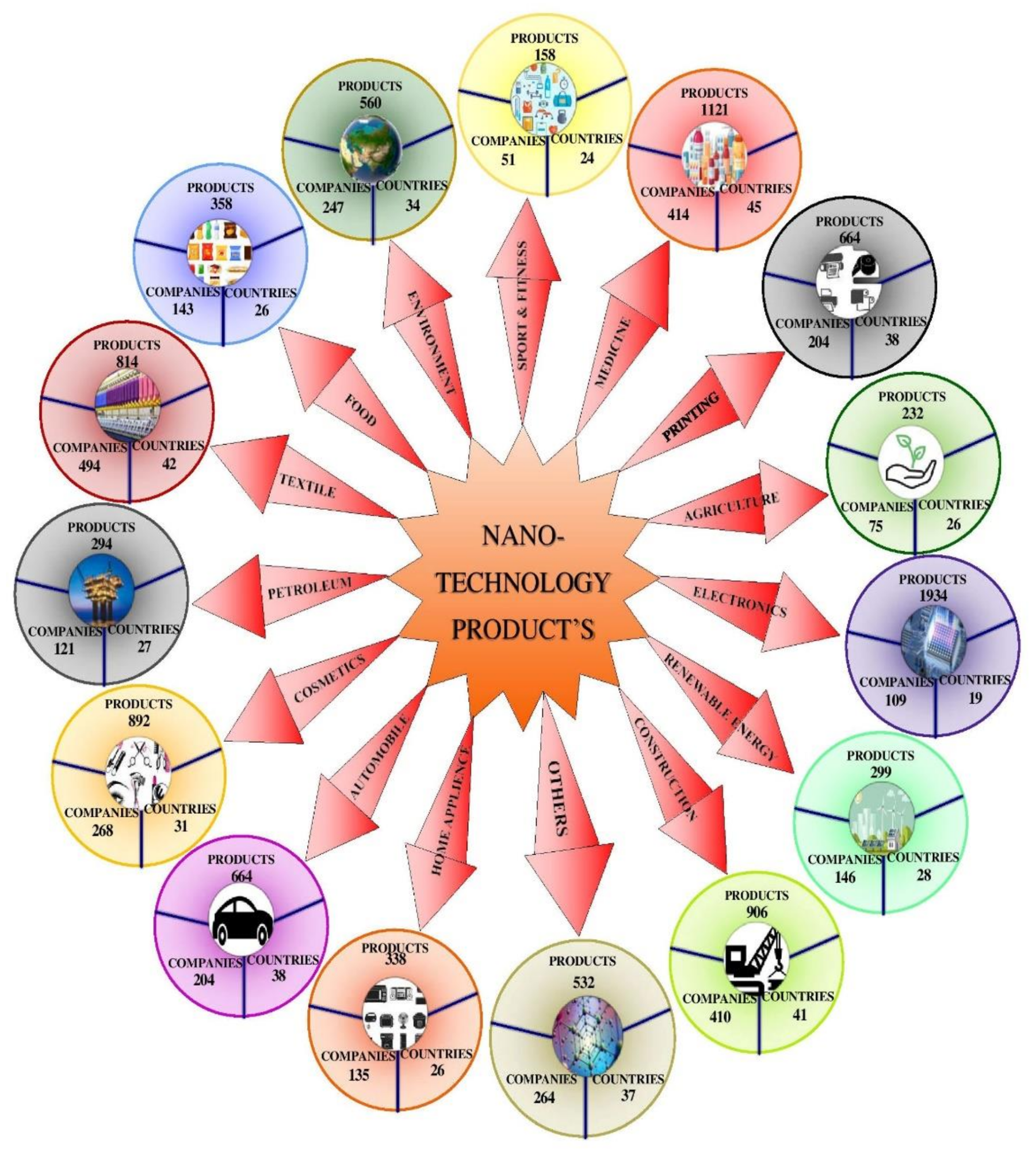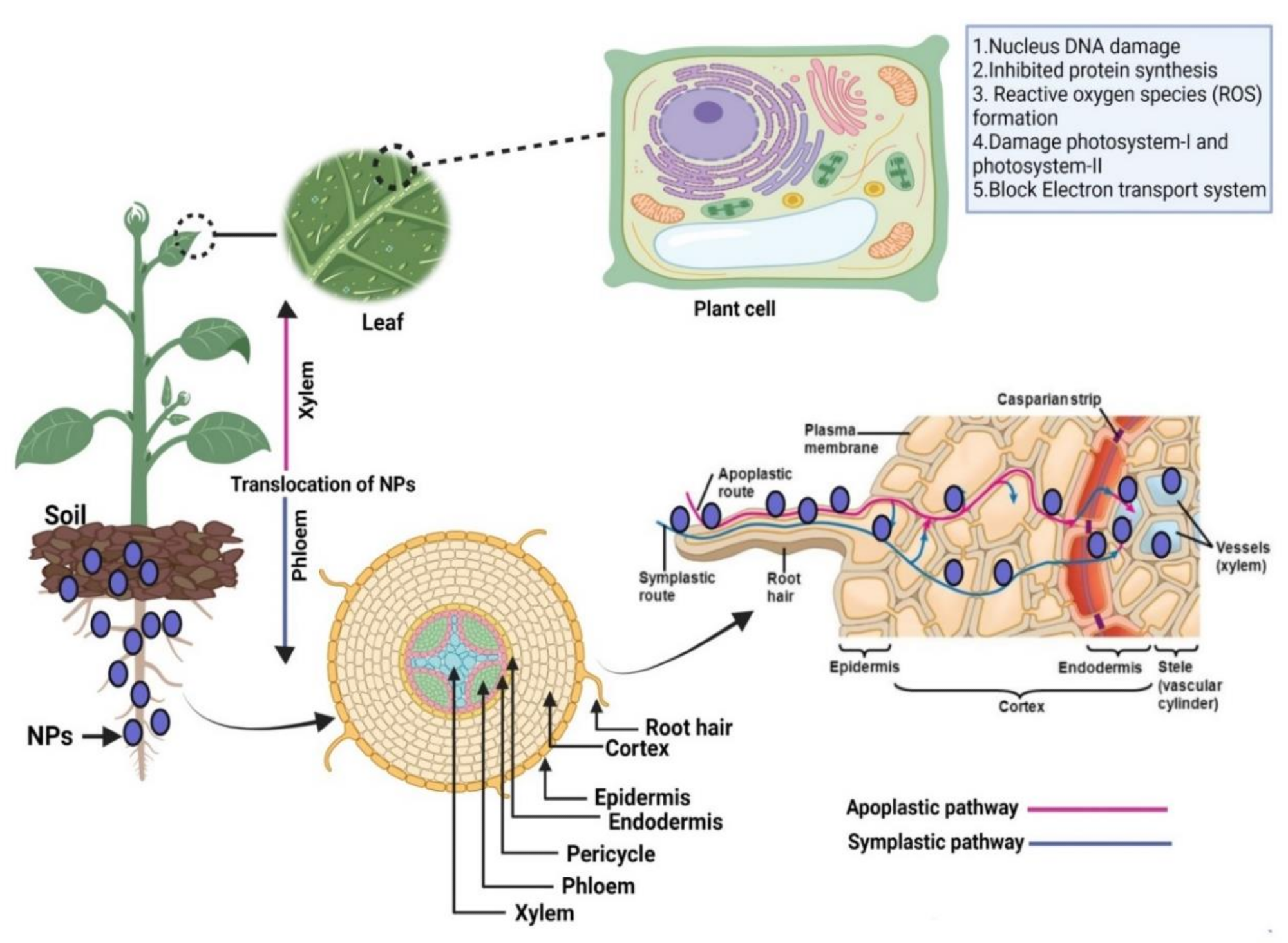The synthesis of modified nanoparticles for agriculture purposes has a promising future. Researchers have discussed its potential in a review recently published in the journal Plants.

Study: Nano-Enabled Products: Challenges and Opportunities for Sustainable Agriculture. Image Credit: Fotokostic/Shutterstock.com
Agricultural applications of nanotechnology have the opportunity to revolutionize agricultural production. It contributes to the resolution of persistent agricultural challenges through advanced technology and materials. There is also fascinating information on commercially produced nano-enabled products used in agriculture and related industries.

Representation of nanotechnology products, manufacturing firms, and countries involved. © Rajput, V., et al. (2021).
Traditional Agriculture
Agriculture has always been the most essential and steady sector because it generates and supplies raw materials to the food and feed industries. The scarcity of environmental assets and the world's growing population requires agricultural production to be economically sustainable, viable, environmentally friendly, and efficient.
This change will be critical for achieving many goals in the coming year. Several strategies for replacing traditional agricultural practices have been developed by researchers over the last several centuries.
Nanotechnology is one evolving methodology that is believed to enhance sustainability efforts of modern agriculture, such as crop productivity through improved plant nutrition, water productivity, crop protection against insects and pathogens through the development of nano-enabled formulations, and environmental protection of degraded sites through nano-bioremediation.
The distinct physicochemical characteristics of nanoparticles (NPs) contribute significantly to their suitability for a wide range of applications.
Major Issue in Agricultures
The majority of these issues are usually related to pesticides, herbicides, fertilizers, and the proper use of these products. The distribution of nanoparticles in plants follows a distinct path with numerous advantages. Because of their essential properties, such as surface-to-volume ratio, size, and optical properties, nanoparticles have a high capacity to protect crops.
Nano-encapsulated pesticides and fertilizers dispensed via a technique that distributes the material in a controlled manner are a good example of NPs application. This method, too, is site-specific. This high-efficiency strategy is advantageous for protecting non-target microbes and other collateral repairs.

Uptake and translocation of nanoparticles by plant tissues: nanoparticles interact with plant roots, translocate through the epidermis, cortex, endodermis, and pericycle and then into xylem vessels via apoplastic and symplastic pathways. © Rajput, V., et al. (2021).
Nano Herbicides and Nano Fertilizer Usage
Nano-herbicides are easily decomposed in soil particles and kill weed growth, and they could be designed to be less harsh on crops. They have been shown to have a remarkable ability to kill weeds while increasing crop yields. Furthermore, when nanoparticles were mixed with certain weedkillers such as atrazine, ametrine, and triazine, the efficiency of these nano-enabled herbicides increased by 84%. Atrazine is a prevalent herbicide used to remove weeds and undesired grasses.
To address the issue of fertilizer absorption, nano-enabled nutrients can be used to regulate nutrient release based on crop needs. However, only a few nano-fertilizer formulas are currently being synthesized in China, Germany, and the United States, and only a few are being tested in laboratories.
The use of nano-fertilizers can boost NUE while reducing environmental risks. Recent research has also concentrated on carbon nanotube-based fertilizer application. Carbon nanotubes have a large surface area and could govern moisture under irrigation or water supplies.
Challenges in Applying Nanotechnology
The main concerns of nano-enabled products are the possible future concentrations of nanoparticle used, since it has shown harmful effects at different levels at elevated doses. The continuous use of nano-enabled products, particularly in agriculture, has the potential to raise their content in soil and crops. The majority of the nano-enabled products shown in the tables/figures do not reveal the applied nanoparticles' concentration, particle size, name, or fabrication techniques.
Nanoparticles could be transmitted from root to leaf and leaf to root, eventually making their way into the food chain. Furthermore, they show large-scale bioretention and accumulation within living creatures, potentially exceeding safe levels. Even a small amount of NPs could be harmful to humans.
Toxicity at greater concentrations can cause developmental delays and inhibition. The toxicity of NPs, on the other hand, varies depending on their shape, size, concentration levels, base materials, and surface coating
Green Nanotechnology and Future Results
Green nanotechnology is an emerging field that is developing clean, safe, and ecologically friendly alternatives to product lines that are currently used in a variety of industries. As the name implies, they are generated from various plant parts, microbes, amino acids, glucose, and so on.
Based on recent studies, the current review investigated the use of nano-enabled commodities and discovered some intriguing features. Although, more scientific evidence about these or new nano-enabled goods is needed. Future research should focus on understanding the main mechanisms of nano-enabled products' interactions with the food supply chain, as well as their genomic consequences.
Continue reading: What is Green Synthesis of Nanoparticles?
Reference
Rajput, V., et al. (2021). Nano-Enabled Products: Challenges and Opportunities for Sustainable Agriculture. Plants 2021, 10(12), 2727. Available at: https://www.mdpi.com/2223-7747/10/12/2727
Disclaimer: The views expressed here are those of the author expressed in their private capacity and do not necessarily represent the views of AZoM.com Limited T/A AZoNetwork the owner and operator of this website. This disclaimer forms part of the Terms and conditions of use of this website.